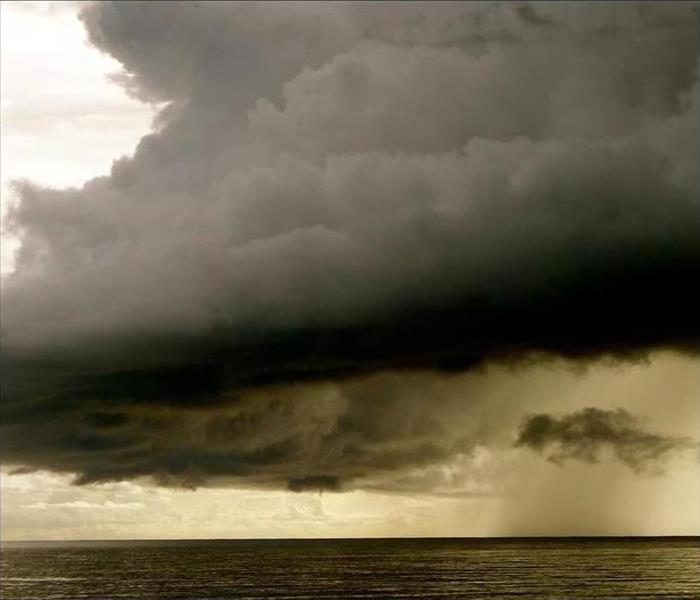How to Prepare for Spring Storms
3/3/2020 (Permalink)
 Gulf of Mexico waters are freakishly warm, which could mean explosive springtime storms for Florida and surrounding areas.
Gulf of Mexico waters are freakishly warm, which could mean explosive springtime storms for Florida and surrounding areas.
“Spring is the first kiss of summer.” -Anonymous
Spring has arrived and the excitement of summer, warm sun rays, and hot days are just around the corner. Although spring represents the end of winter and new beginnings, it also consists of spring showers, thunderstorms, and unpredictable weather, which can cause severe problems if not properly prepared. Since Florida weather already seems irregular, how do you prepare for unexpected spring storms, what do you do in the event of severe weather conditions, and what is needed to stay safe among hazardous conditions following a storm?
Preparing for the unknown can save lives, so we have provided these important preparation steps.
Organize an Emergency Plan
Putting a plan in place can potentially save you and your family’s lives. But one plan may not work for every type of severe weather condition, such as thunderstorms, floods, and tornadoes. For instance, your evacuation plan for a tornado should be different than if a flood occurred and the streets are two feet under water. Each emergency plan prepared needs to include a map of your home, routes to safety, and an emergency shelter or destination. Being prepared for each type of life-threatening weather condition is important in keeping your family safe before and after a disaster.
Go Inside When You Hear Thunder
According to the American Red Cross, lightning strikes are the leading killer. Every year lightning has killed more people than hurricanes or tornadoes. When you hear thunder, loud or soft, go inside! With lightening strikes following thunder, every lightening flash is a potential killer.
Protect Your Electronics
To avoid damaging your electronics during a storm, you should plug all electronics into surge protectors. By doing this, the surge protector protects your electronics from burning up due to voltage strikes. If any electronics are not safeguarded by surge protectors, unplug the devices before a storm.
Keep an Emergency Kit
Because severe weather can be unpredictable, you need to put together an emergency kit beforehand. When preparing an emergency kit you should include a first aid kit, a 3-5 day supply of water, nonperishable food, personal hygiene items, blankets or sleeping bags, flashlights, a battery-operated radio, and extra batteries. Make a list of important information to have on hand, like your insurance and utility company’s phone numbers. In case you get stuck in severe weather on the road, keep a second emergency kit in your car. Additional resources on an emergency kit can be found at: https://www.ready.gov/kit.
We at SERVPRO believe that by failing to prepare, you are preparing to fail.






 24/7 Emergency Service
24/7 Emergency Service